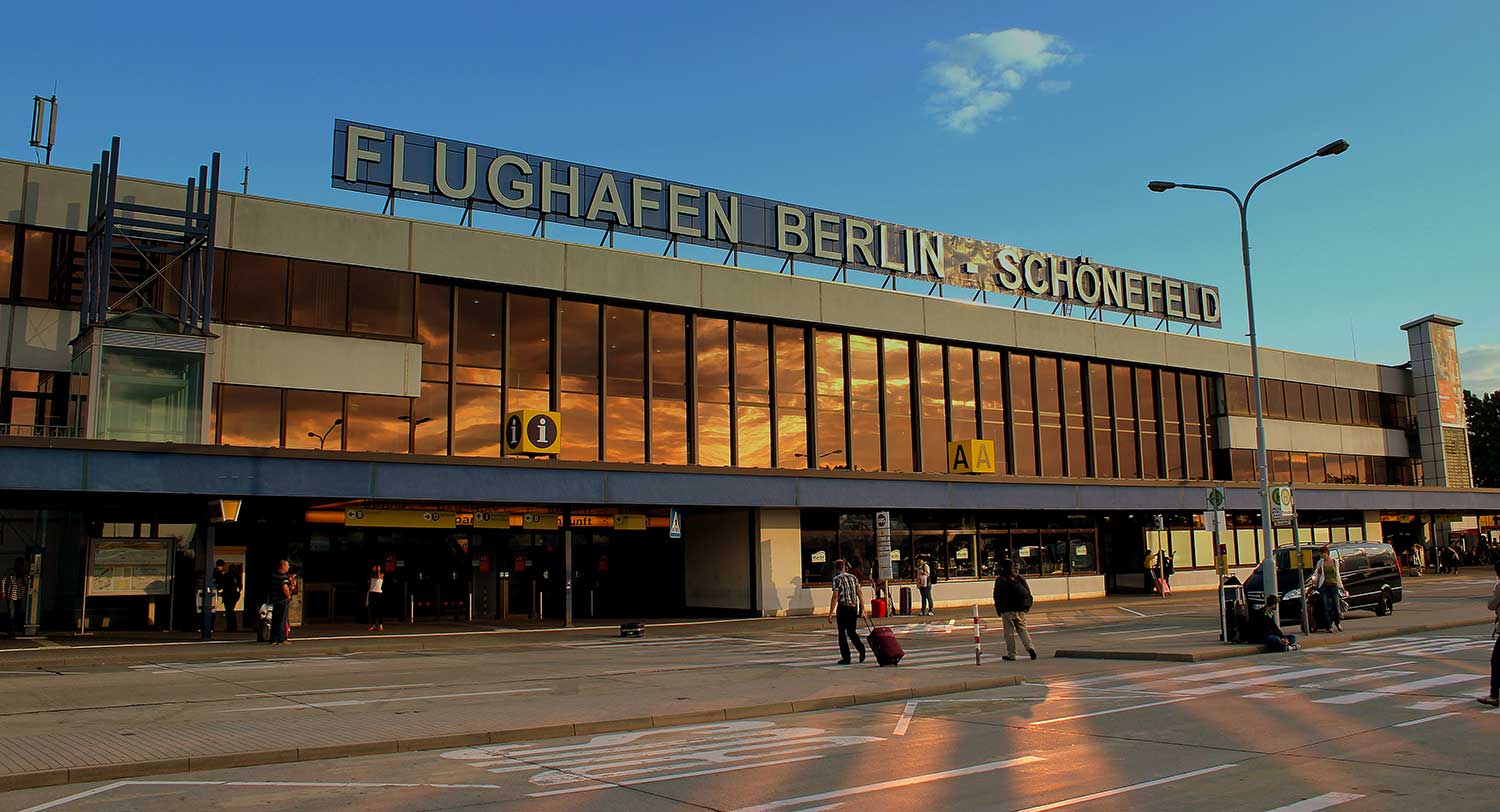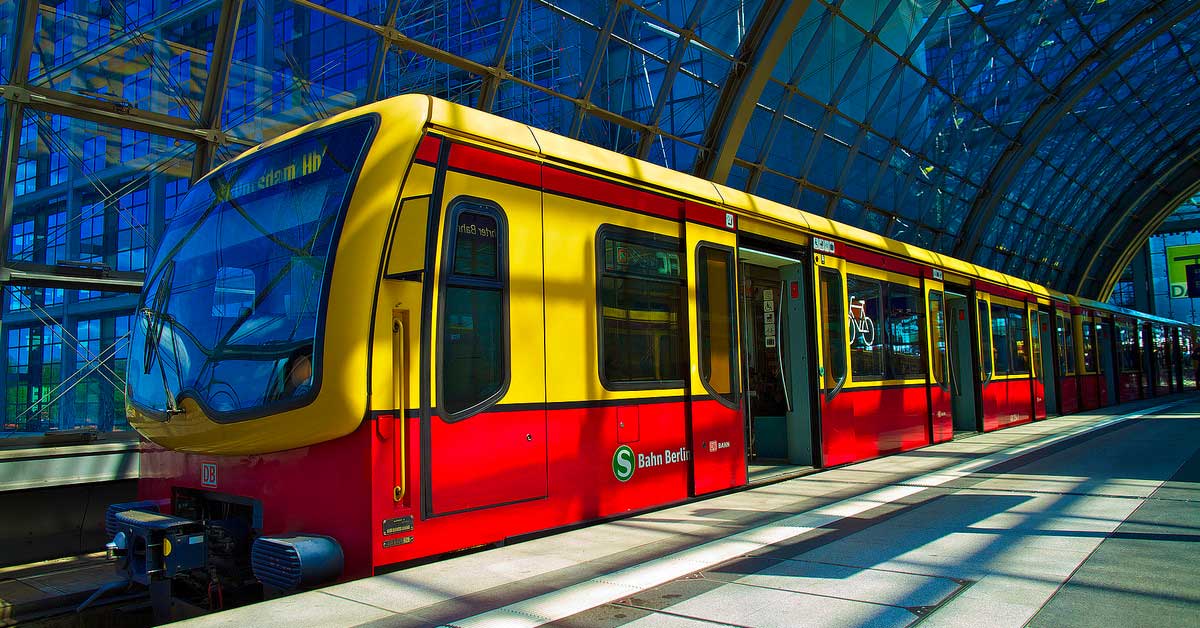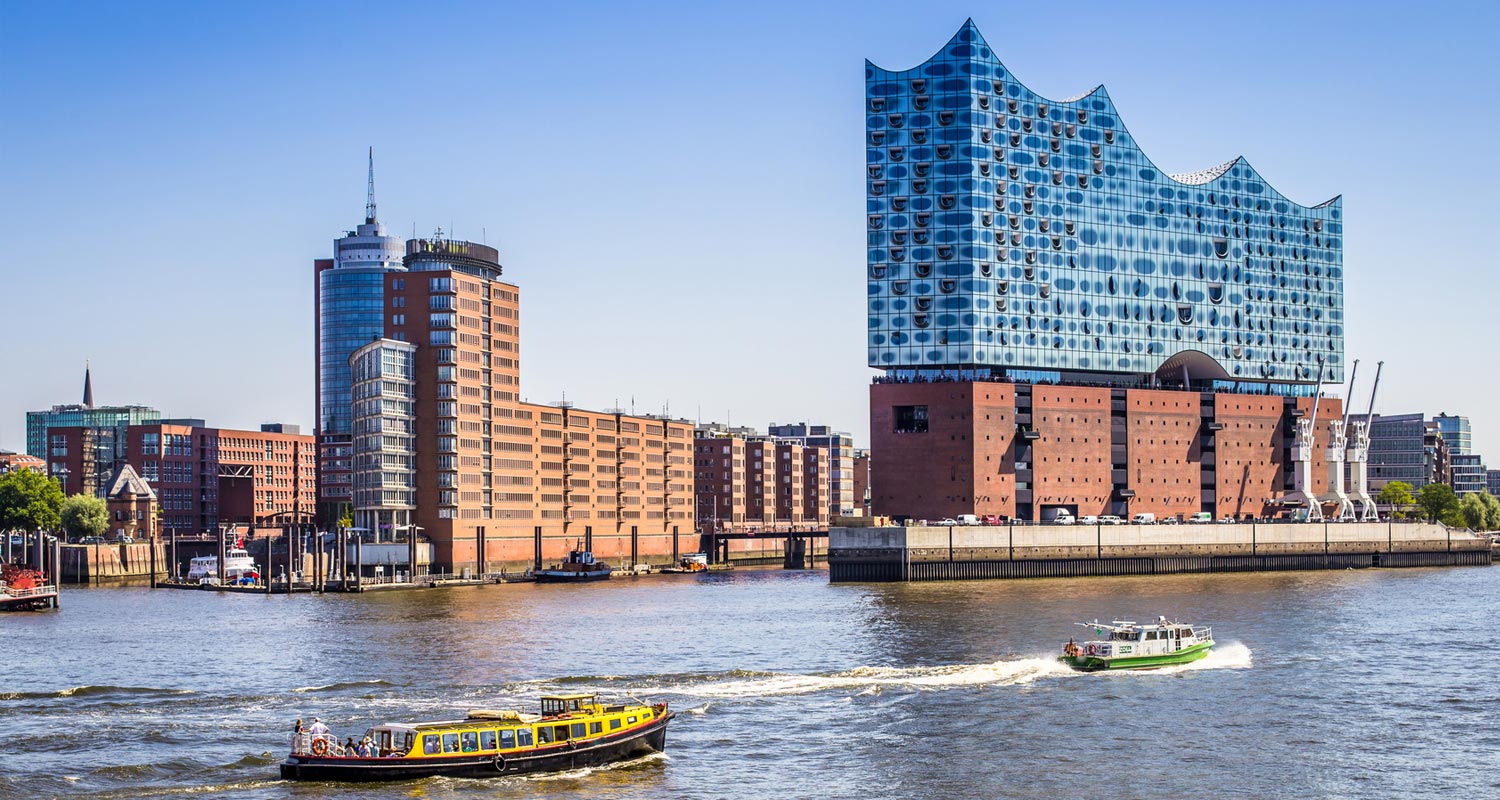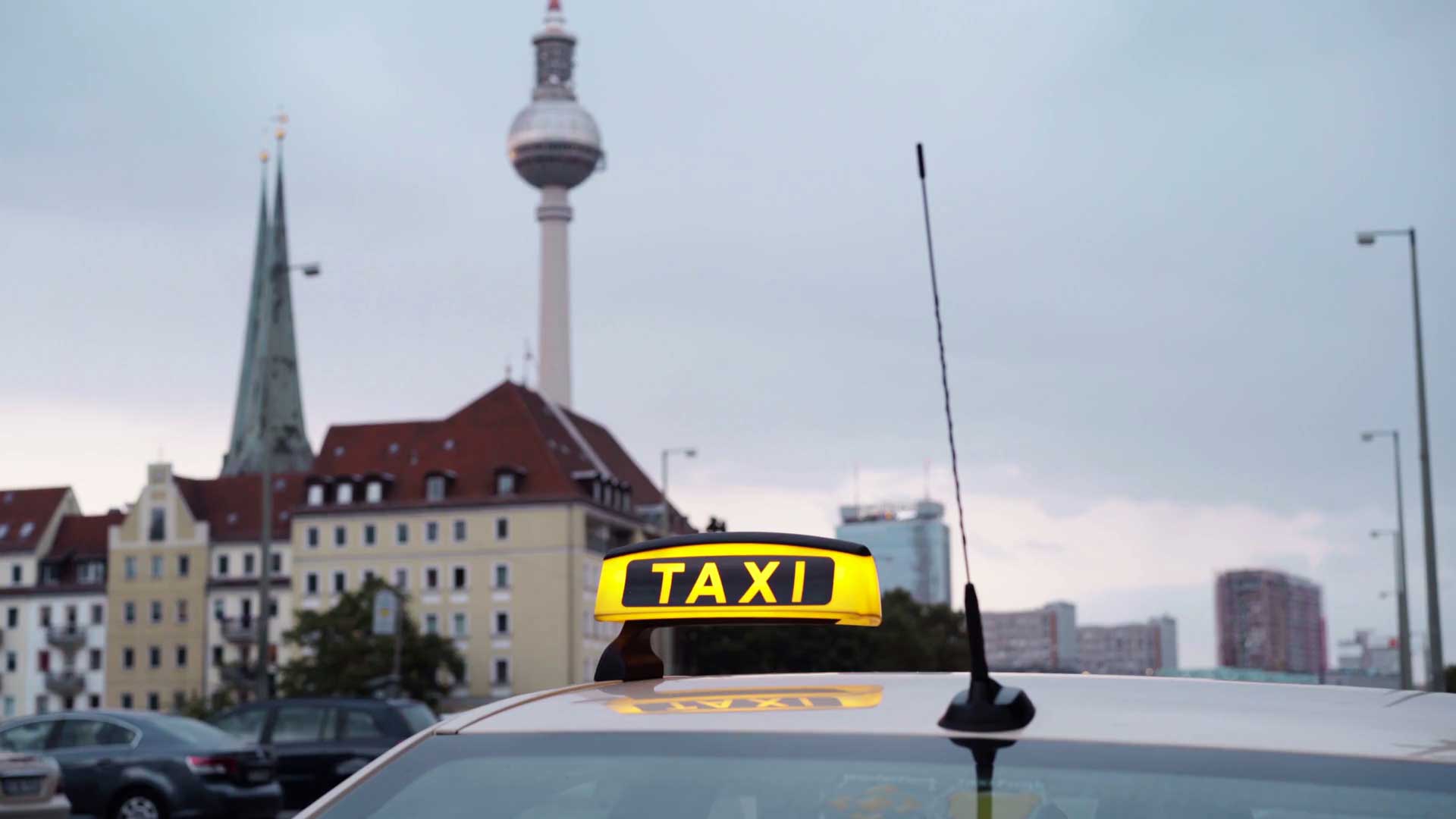The best way for you to get to Berlin – by car, by train, by coach: you can get to Berlin easily and comfortably. The airports and railway stations also have great connections to your destination. We’ve put together some notes on what to keep in mind if you’re driving yourself.
Arrival by Airplane
Berlin has two airports: Both Tegel and Schönefeld Airport can be easily and quickly reached from the city's centre, and are optimally integrated into the airlines' national and international route network. The largest airlines at Berlin's airports are easyJet and the Deutsche Lufthansa.
Airports
Berlin offers two airports which both are accessable with the public transport system very easly. Schönefeld is situated in the southeast of Berlin, approximately 18 km from the city centre. The airport is connected with the city centre by the S-Bahn (suburban train) lines S49 and S9 as well as with several AirportExpress trains that run from/to Hauptbahnhof, Zoologischer Garten, Friedrichstraße, Alexanderplatz and Ostbahnhof every half an hour. S45 and S9 need about 45 minutes for the trip to the centre, the trains take 15 min (from/to Ostbahnhof) to 30 min (from/to Hauptbahnhof), 35 min (from/to Zoologischer Garten). All trains and the S-Bahn stop at the station "Flughafen Berlin-Schönefeld".
Arrival by public transport
Airport Tegel
Tegel Airport can only be reached by bus, but there are four different routes. The buses arrive on time and very often.
The TXL bus runs via the S-Bahn station Beusselstraße (circle line) and Berlin Central Station to Robert-Koch-Platz. This bus will take you to Berlin Central Station in 15 minutes. (Please note: the TXL bus is no longer running until Alexanderplatz)
Bus X9 is an express bus that runs between the Zoological Garden and the airport. The total journey time on this route is 16 minutes.
Line 128 does not take you directly to the city centre, but you can change to the underground lines U6, U8 or U9 on the line.
Finally bus 109: It will take you through Charlottenburg, where you can change to the U7, U1 and U9.
Schönefeld Airport
Schoenefeld Airport is also well connected to public transport, with six local bus lines. However, it is quicker and easier to get to the city centre by S-Bahn. With the S9 you reach the airport from the Zoologischer Garten after 50 minutes, from Friedrichstraße it takes about 40 minutes. The S9 line also passes other major train stations in the city centre, so you can easily get to the airport without changing trains.
The S45 takes you to Treptower Park, where you can change to the Ringbahn, with which you are also well connected.
Another possibility is the regional train, which also runs to the surrounding area of Berlin. You can reach Schoenefeld Airport by regional train 14 from Alexanderplatz after 27 minutes. The regional train 22 takes you comfortably to Charlottenburg and the regional train 7 even to Potsdam.
If you decide to travel to or from the airport by public transport, please remember that you will also need to buy a ticket for your luggage. A single ticket for the AB area is enough to get to Tegel. Schoenefeld is already in the C range, so you need an ABC ticket. A reduced ticket can be validated for children up to and including 14 years of age.

Arrival by Train
You can reach Berlin from all directions by using the fast InterCityExpress-, InterCity-, EuroCity- and InterRegio Trains. The new central station Berlin Hauptbahnhof in the heart of Berlin was opened in 2006 and a new concept for the railways and stations in Berlin was installed. All train stations are well connected to the public transport system.

Arrival by car
It is easy and comfortable to go to Berlin by car. The city has a good connection to the motorway, there a several big streets going to the centre and enough spots for parking in the inner city.
Berlin’s Environmental Zone
Please note that you need an environmental badge for you car because the centre of Berlin is a environmental zone. Berlin’s city centre has had a designated environmental zone in which only vehicles that meet certain emission standards are allowed to be driven. Vehicles that are used in the environmental zone must have a sticker that identifies its pollutant group.
Special Permission for Coaches in the Environmental Zone
The new rule for the second stage of Berlin’s environmental zone includes a driving ban within Berlin’s S-Bahn ring for vehicles with yellow stickers. German coaches need a green sticker to be allowed in Berlin's city centre. Foreign coaches are not affected by this rule and can continue to drive with a yellow sticker in the city centre.
Car parks
There are plenty of multi-storey car parks available in all of Berlin’s districts, where you can park cheaply and quickly get to your sightseeing destination.
Parking zones
In the city centre are many parking zones where you have to buy a ticket.
Car-sharing and rental car
Berlin has a good network of car-sharing operators - your choice for excursions around the city. For long term stays, choose your rental car here - easy, fast and on good terms. In cooperation with mietwagenmarkt.de you can compare different agencies and prices and reserve your desired car directly online.

Arrival by coach
Coaches are a popular form of transport for people visiting Berlin, and not just for school trips, bowling excursions and senior citizen outings. They are affordable, reliable and comfortable. With a number of coach stations all over the city, you can head straight to your desired location. National and international coach services to Berlin arrive and depart at the central bus station in the Charlottenburg district, opposite the ICC International Congress Centre.
Scheduled coach tickets
Here is a selection of long distance buses in Germany:
FlixBus: With more than 1,000 connections across Germany, this network of coach (long-distance bus) companies operating under the FlixBus name offers lots of flexibility for travellers. Free wifi, on-board toilets and snacks are as much a part of the experience as the low ticket prices and the opportunity to make a small contribution to climate protection. You can catch the FlixBus in Berlin at the central coach station (known as the “ZOB”) in Charlottenburg and at Südkreuz. Tickets are available online and through travel agencies.
IC Bus: The IC Bus is an inexpensive and comfortable way of travelling between Krakow or Copenhagen and the German capital. In addition to free WiFi, the IC Bus also features an entertainment system with a large selection of music and films to help pass the time during your trip. The bus stop in Berlin is centrally-located near Berlin main station, affording travellers simple connections to the long-distance train services of Deutsche Bahn. A trip that includes travel on both an IC Bus and a train can be completed using a single, combined ticket. Tickets are available for purchase at www.bahn.com and at DB Travel Centres.
Special Permission for Coaches in the Environmental Zone
The new rule for the second stage of Berlin’s environmental zone includes a driving ban within Berlin’s S-Bahn ring for vehicles with yellow stickers. Since January 2012 German coaches need a green sticker to be allowed in Berlin's city centre. Foreign coaches are not affected by this rule and can continue to drive with a yellow sticker in the city centre.

Arrival by boat
No, Berlin is not right on the sea, but from the ports on the German coast ship passengers still getting comfortable to Berlin. Especially Berlin visitors from Scandinavia and Northern Europe arrive on the waterway. But passengers of cruise ships are docking in Rostock, Kiel or Hamburg are going off the ship for a trip to the capital.
Travelling via Hamburg
- Hamburg-Harwich (Great-Britain)
- DFDS Scandinavian Seaways, up 4 x per week
- Drive on to Berlin in 90 minutes by train from Hamburg-Hauptbahnhof or by car via A24.
Travelling via Kiel
- Kiel-Göteborg (Sweden)
- Stena Line, 1 x per day
- Kiel-Oslo (Norway)
- Color Line, 1 x per day
- Drive on to Berlin by train from Kiel Hauptbahnhof or by car via A24.
Travelling via Rostock
- Rostock-Gedser (Denmark)
- Scandlines, 9 x per day
- Rostock-Trelleborg (Sweden)
- TT-Line, Scandlines, up to 9 x per day
- Rostock-Tallinn (Estonia) - Helsinki (Finland)
- Silja Line, up to 3 x per week
- Rostock-Hanko (Finland)
- Superfast Ferries (since 2002)
- Rostock-Södertälje (Sweden)
- Superfast Ferries (since 2002)
- Drive on to Berlin by train from Rostock Hauptbahnhof or by car via E55 or A10/A24.
Travelling via Sassnitz
- Sassnitz-Trelleborg (Sweden)
- Scandlines, 5 times a day
- Sassnitz-Rönne (Bornholm/Denmark)
- Scandlines, Bornholms Trafikken, up to 2 times a day
- Sassnitz-St. Petersburg (Russia)
- TransRussiaExpress, 2 times a week
- Sassnitz-Klaipeda (Lithuania)
- Scandlines-Euroseabridge, LISCO, 3 times a week
- Drive on to Berlin by train from Sassnitz Fährhafen or by car via E E22/55/A19.
Travelling via Travemünde
- Travemünde-Trelleborg
- TT-Line, up to 5 x per day
- Drive on to Berlin by train from Travemünde-Skandinavienkai or by car via A24/E26

Taxis in Berlin
Time is money: more than 7,000 taxis offer their fares a quick and comfy ride to their destination. Get safely and comfortably to where you want to go in Berlin whenever you want – airport or railway station, a business meeting or anywhere else you may have in mind.
Berlin call-a-cab lines
You can order a taxi in Berlin on the following phone lines:
- Taxi Berlin: +49 30 – 20 20 20
- Würfelfunk: +49 30 – 21 01 01
- TaxiFunk Berlin: +49 30 – 44 33 22
- Quality Taxi: +49 30 – 26 300 0
- City-Funk Berlin: +49 30 – 21 02 02
- Funk Taxi Berlin: +49 30 – 26 10 26
- Talixo: +49 30 – 346 497 360
- EcoTaxi: +49 30 – 210 10 20
If you’re on the move already, you can also simply flag down a free cab. A taxi is free if its roof sign is lit up. There are also taxi ranks all over the city, with taxis waiting for you or with taxi-call points for requesting pick-up.
From and to the airport in Berlin
There are also taxi ranks at all railway stations and airports. You can choose any taxi waiting there, you’re not obliged to take the first in line! Recommended: at Berlin’s airports, go to the indicated taxi ranks – this way, you’ll avoid impostor taxis charging excessive fares. You can tell a real taxi from a fake one by the Berlin number plate and the concession number on the rear window. Berlin does not hand out concessions with a number greater than 8,000. To get from your hotel to the airport, your hotel’s reception will also be happy to call a taxi for you.
Berlin taxi fares
Since 30 June 2015, the base fare is €3.90, each of the first seven kilometres costs €2.00 and each subsequent kilometre is €1.50. This lets you estimate your fare pretty accurately before you even get into the taxi. Mini-van taxis and bulky luggage incur an extra charge. Waiting in heavy traffic shouldn’t usually affect the fare – the meter does not account for time until after a two-minute delay.
Taxi short trips
If you only want to travel a short distance, you can flag down a taxi on the roadside. The fare for what Berlin cabbies call a short trip is €5.00 for a two-kilometre trip. Please tell the driver straight away that you want a short trip (Kurzstrecke in German). You can only get the short-trip fare for flagged taxis, a maximum trip distance of two kilometres and if you do not interrupt your journey.
Prices for standard routes in Berlin
Depending on the number of people and the amount of luggage, or if you have bulky luggage, fares may vary. Unless desired otherwise by the passenger, drivers are obliged to take the shortest route.
Paying your taxi fare
If you can, keep some banknotes of lower denomination with you – taxi drivers are not obliged to hold large amounts of change. Today, paying your fare by credit card or EC cash card should be possible in any cab.
Receipt for taxi trips
Always ask for a receipt. This is important should you accidentally leave something in the vehicle. The receipt will allow you to identify the vehicle you travelled in. The receipt is also evidence in the event of trouble with the paid fare. Make sure that the receipt includes the following details:
- Operator's address
- Concession number (usually pre-printed, number must match the number on the bottom right of the rear window)
- Fare
- Date
- Distance
- Signature
More detailed information on taxi services is available at the Taxiverband Berlin, Brandenburg e.V.





